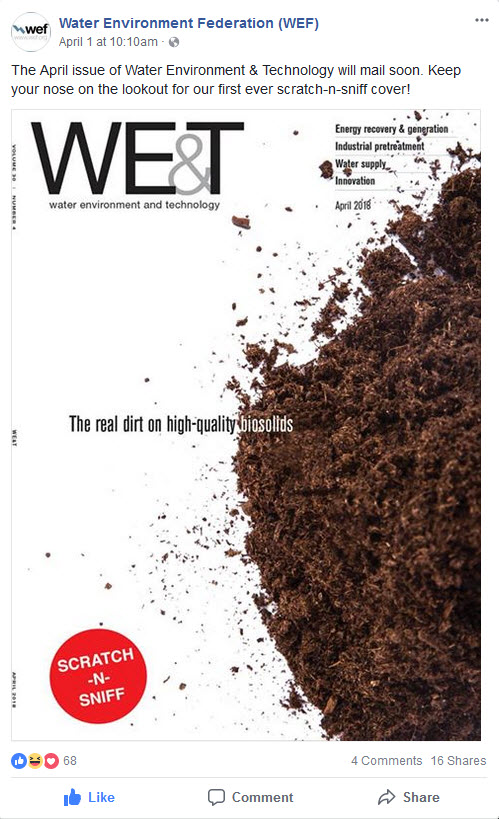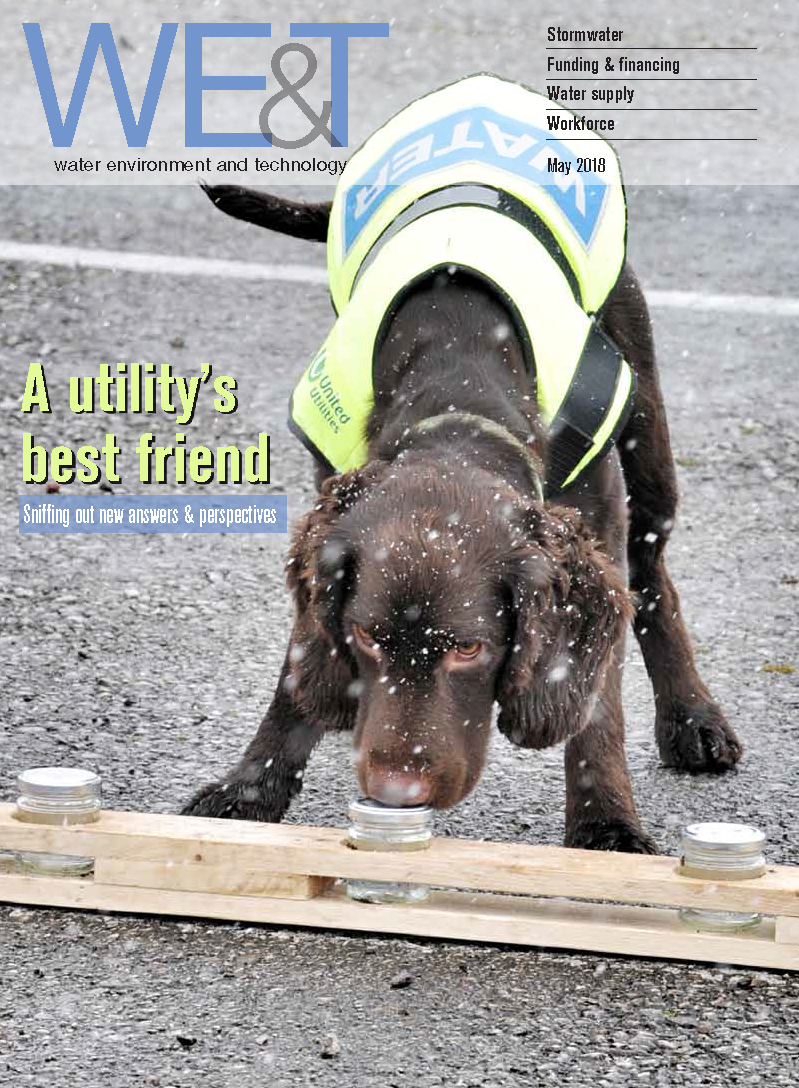Those of you who follow the Water Environment Federation on Twitter, Facebook, or Instagram might’ve noticed that when your April issue of WE&T arrived, it looked and smelled a little different than you might’ve been expecting. We just couldn’t resist pulling an April Fools’ Day prank.
We, technically and officially, did not create a scratch-n-sniff biosolids cover. However, after we finished writing the silly tweets and Facebook messages, we realized that we’d stumbled upon an unintended truth: biosolids, especially high-quality varieties, don’t need to smell any stronger than the ink on a magazine cover.
We set out to amuse and provoke in the spirit of April Fools’ Day, and we think we succeeded. Across all social media platforms, these posts received more than 170 likes, 35 shares, and many comments. Regarding the comments: In many cases, we still aren’t quite sure if we fooled some of you or if you have superbly dry senses of humor. Either way, it made us smile.




 Steve Spicer is director of content creation at the Water Environment Federation. For the last 18 years, Steve has worked on Water Environment & Technology magazine as well as most of the other WEF periodicals. During this tenure, he has spent time in nearly every editorial role and also holds the title of Editor in Chief with oversight of all day-to-day operations of the editorial team and interaction with the magazine’s designers.
Steve Spicer is director of content creation at the Water Environment Federation. For the last 18 years, Steve has worked on Water Environment & Technology magazine as well as most of the other WEF periodicals. During this tenure, he has spent time in nearly every editorial role and also holds the title of Editor in Chief with oversight of all day-to-day operations of the editorial team and interaction with the magazine’s designers.